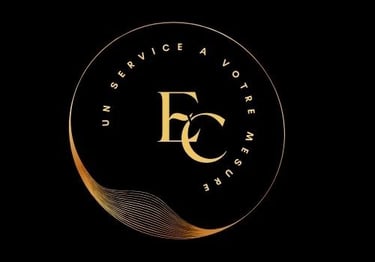LVMH: Luxury Strategies and Sustainable Commitment – An Inspiring Analysis
Discover how LVMH combines visionary marketing and social responsibility to remain the leader in luxury. Analysis of its strategy, its CSR initiatives and the challenges to be met.
MARKETINGRSE
LYDIE GOYENETCHE
11/8/20254 min read


LVMH, the global luxury giant led by Bernard Arnault, continues to push the boundaries of innovation, whether through its sophisticated marketing strategy or its strong commitment to social and environmental responsibility (CSR).
This article explores how the group combines its heritage of know-how with a modern and sustainable vision, while remaining the undisputed leader in its sector.
A Louis Vuitton and Dior Strategy: Excellence as DNA at LVMH
LVMH's marketing strategy is based on solid foundations that reflect its luxury DNA. The diverse portfolio of more than seventy prestigious brands, such as Louis Vuitton, Dior, and Moët & Chandon, covers sectors ranging from fashion to wines and spirits to cosmetics. Each brand retains creative independence while benefiting from the strategic and financial support of the group. This integrated ecosystem allows LVMH to innovate while maintaining a consistent image.
At the heart of this strategy is an unrivalled premium positioning, targeting a demanding clientele in search of exclusivity and innovation. Personalized customer experience is a top priority to build consumer loyalty and engagement. From captivating storytelling to in-store VIP services, every interaction reflects LVMH's signature attention to detail.
At the same time, the group relies on exemplary vertical integration, controlling the entire value chain, from raw material sourcing to distribution. This approach ensures the exceptional quality and exclusivity that sets its products apart.
A remarkable point in recent years is the increasing investment in large-scale sporting events, such as sponsorship of the Olympic Games or partnerships with Formula 1. These initiatives strengthen LVMH's global visibility while illustrating a bold marketing strategy.
LIFE 360 and Chantal Gaemperle's Commitment: When CSR Becomes an Art at LVMH
LVMH's commitment to social and environmental responsibility is driven by figures such as Chantal Gaemperle, the group's director of human resources and synergies. The LIFE 360 (LVMH Initiatives for the Environment) program embodies this commitment. Launched in 2021, it sets ambitious targets around creative circularity, biodiversity, climate and transparency, to be achieved between 2023 and 2030.
The protection of biodiversity is at the heart of the priorities, with a target of certification of 100% of strategic materials to preserve ecosystems and natural resources. Each year, LVMH strengthens the coordination of its CSR objectives through its ESG committee, while adapting employee compensation rules to include criteria related to sustainable development. This strategic alignment is underpinned by a philosophy of sustainable innovation and shared responsibility.
In addition, LVMH supports cultural and solidarity initiatives around the world. His philanthropic commitment, whether it be heritage restorations or support for social causes, consolidates his image as a responsible and visionary actor.
Inclusion and Neurodiversity: Expanding the Meaning of Excellence
Beyond its environmental and cultural commitments, LVMH is also advancing inclusion within its human resources strategy. Under the leadership of Chantal Gaemperle, the group has established a Disability Inclusion Office and launched the LVMH Inclusion Index, both designed to strengthen diversity and equity across all Maisons. The group’s goal is to double the number of employees with disabilities by 2025, with programs such as the “Angels Program” at Louis Vuitton China, which hires and trains hearing-impaired employees for in-store roles.
While LVMH’s initiatives initially focused on physical and sensory disabilities, the company has recently started to open the conversation around neurodiversity, including conditions such as ADHD, dyslexia, and autism spectrum profiles. This evolution reflects a broader understanding of talent and creativity, recognizing that innovation often flourishes through different ways of thinking and perceiving the world. In the long term, the challenge will be to integrate these perspectives more deeply into LVMH’s culture of excellence — ensuring that diversity is not only visible in numbers, but also embedded in the group’s creative processes and leadership mindset.
LVMH Facing Criticism: Between Transparency and Challenges
Despite its many advances, LVMH has not escaped criticism. In 2024, Dior was singled out for shortcomings in its supply chain disclosure and for ESG commitments deemed outdated. These critics are a reminder of the importance of remaining vigilant and strengthening transparency to meet the growing expectations of consumers and investors.
In addition, some NGOs raised questions about working conditions in certain production chains or the lack of diversification of senior management. Although LVMH is investing in initiatives to improve these aspects, these areas remain open areas that deserve sustained attention.
Bernard Arnault and the Art of Responsible Innovation at LVMH
Under the visionary leadership of Bernard Arnault, LVMH illustrates how a company can combine tradition and modernity. Its ability to reconcile economic growth and positive impact makes LVMH a model for ambitious companies.
However, LVMH's model also underlines the importance of balance. While the group excels in many areas, it still needs to strengthen its transparency and its dialogue with stakeholders to meet an increasingly demanding societal demand.
Conclusion: The Luxury of Tomorrow
LVMH embodies a rare balance between prestige and sustainability. Whether through bold strategies or cultural and environmental initiatives, the group is showing that the future of luxury lies in the harmony between innovation and responsibility. For companies aspiring to be inspired by this example, the lesson is clear: the luxury of tomorrow is one that combines creation, respect and positive impact.
However, the future also calls for continued introspection. By strengthening its social and ethical commitments, LVMH has the opportunity to become an even more universal model for future generations, where excellence is measured not only by the brilliance of luxury, but by the positive impact it leaves on the world.


EUSKAL CONSEIL
9 rue Iguzki alde
64310 ST PEE SUR NIVELLE
07 82 50 57 66
euskalconseil@gmail.com
Mentions légales: Métiers du Conseil Hiscox HSXIN320063010
Ce site utilise uniquement Plausible Analytics, un outil de mesure d’audience respectueux de la vie privée. Aucune donnée personnelle n’est collectée, aucun cookie n’est utilisé.